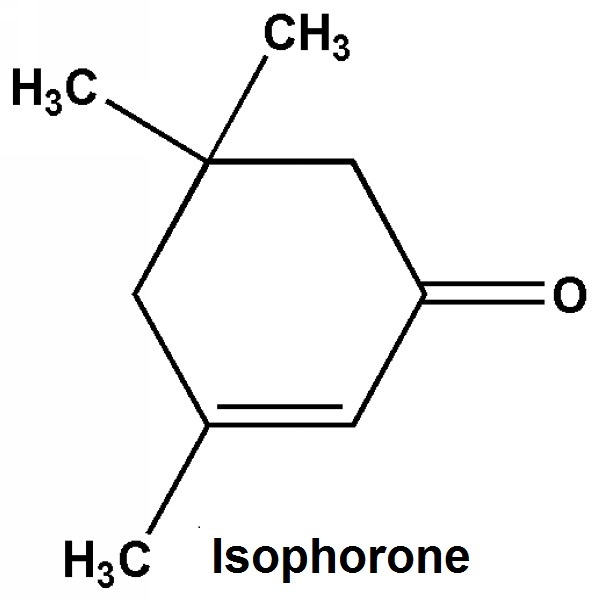An Important Chemical Material -- Isophorone
Isophorone, also known as 3,5,5-trimethyl-2-cyclohexene-1-one and 1,1,3-trimethyl-3-cyclohexene-5-one, is a clear liquid that smells like peppermint. The CAS form of isophorone is 78-59-1. It can be dissolved in water and evaporates somewhat faster than water. It is an industrial chemical used as a solvent in some printing inks, paints, lacquers, and adhesives. It is also used as an intermediate in the production of certain chemicals. Although isophorone is an industrial chemical, it also occurs naturally in cranberries.
Isophorone can be manufactured by catalyzed self-condensation of acetone. Mesityl oxide is the initial product of the self-aldol condensation of acetone. The mesityl oxide formed can react further with acetone via a Michael reaction and subsequent intramolecular aldol condensation to eventually obtain the six-membered ring of isophorone. This is an example of the Robinson annulation. The yield of the two compounds depends on the reaction conditions.
In general, isophorone has a broad application. First of all, isophorone is used mainly as a solvent for paints and varnishes, and printing inks for plastics. Then, isophorone is also used in some herbicide and pesticide formulations and in adhesives for plastics, polyvinylchloride, and polystyrene materials. What's more, isophorone is an intermediate in the synthesis of 3,5-xylenol, 3,3,5-trimethylcyclohexanol, and plant growth retardants. Isophorone is a widely used solvent and chemical intermediate. The acute effects of isophorone in humans from inhalation exposure include eye, nose, and throat irritation. Chronic exposure to isophorone in humans can cause dizziness, fatigue, and depression. High-boiling solvent wholesale mainly provide this product to meet the customer's need.
How can isophorone affect people's health? The only effects of isophorone reported by people who have been exposed are irritation of the skin, eyes, nose, and throat, and dizziness and fatigue. These effects have occurred in workers who breathed vapors of isophorone and other chemicals in the printing industry. Short-term exposure of animals to high levels of isophorone has caused inactivity and coma. Some animal studies suggest that isophorone may cause birth defects and slower growth in the offspring of rats and mice that breathed the vapors during pregnancy. These studies found some harmful health effects in adult female animals. When rats and mice were given high doses of isophorone in food or water for a long time, the male rats developed kidney disease.
According to its advantages and application, it can be seen that isophorone is in high demand among the use of industry. Many manufacturers grasp this opportunity, and constantly meet market requirements. Thus, there is no denying that isophorone still has broad application potentials.




 print
print close
close